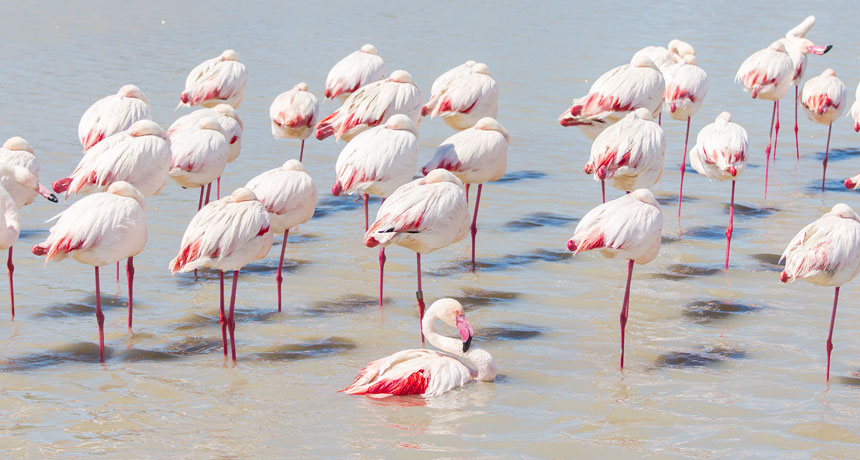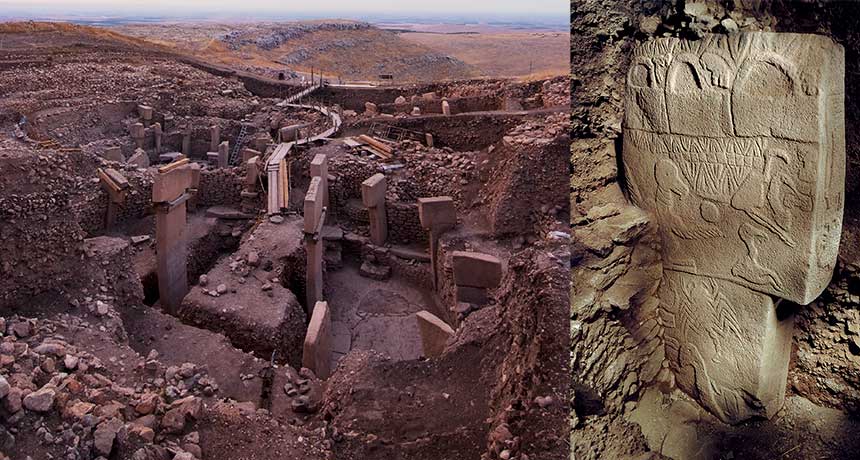Here’s how an asteroid impact would kill you

It won’t be a tsunami. Nor an earthquake. Not even the crushing impact of the space rock. No, if an asteroid kills you, gusting winds and shock waves from falling and exploding space rocks will most likely be to blame. That’s one of the conclusions of a recent computer simulation effort that investigated the fatality risks of more than a million possible asteroid impacts.
In one extreme scenario, a simulated 200-meter-wide space rock whizzing 20 kilometers per second whacked London, killing more than 8.7 million people. Nearly three-quarters of that doomsday scenario’s lethality came from winds and shock waves, planetary scientist Clemens Rumpf and colleagues report online March 27 in Meteoritics & Planetary Science.
In a separate report, the researchers looked at 1.2 million potential impactors up to 400 meters across striking around the globe. Winds and shock waves caused about 60 percent of the total deaths from all the asteroids, the team’s simulations showed. Impact-generated tsunamis, which many previous studies suggested would be the top killer, accounted for only around one-fifth of the deaths, Rumpf and colleagues report online April 19 in Geophysical Research Letters.
“These asteroids aren’t an everyday concern, but the consequences can be severe,” says Rumpf, of the University of Southampton in England. Even asteroids that explode before reaching Earth’s surface can generate high-speed wind gusts, shock waves of pressure in the atmosphere and intense heat. Those rocks big enough to survive the descent pose even more hazards, spawning earthquakes, tsunamis, flying debris and, of course, gaping craters.
While previous studies typically considered each of these mechanisms individually, Rumpf and colleagues assembled the first assessment of the relative deadliness of the various effects of such impacts. The estimated hazard posed by each effect could one day help leaders make one of the hardest calls imaginable: whether to deflect an asteroid or let it hit, says Steve Chesley, a planetary scientist at NASA’s Jet Propulsion Laboratory in Pasadena, Calif., who was not involved with either study.
The 1.2 million simulated impactors each fell into one of 50,000 scenarios, which varied in location, speed and angle of strike. Each scenario was run with 24 different asteroid sizes, ranging from 15 to 400 meters across. Asteroids in nearly 36,000 of the scenarios, or around 72 percent, descended over water.
The deadliness assessment began with a map of human populations and numerical simulations of the energies unleashed by falling asteroids. Those energies were then used alongside existing casualty data from studies of extreme weather and nuclear blasts to calculate the deadliness of the asteroids’ effects at different distances. Rumpf and his team focused on short-term impact effects, rather than long-term consequences such as climate change triggered by dust blown into the atmosphere.
(The kill count of each effect was calculated independently of the other effects, meaning people who could have died of multiple causes were counted multiple times. This double counting allows for a better comparison across effects, Rumpf says, but it does give deaths near the impact site more weight in calculations.)
While the most deadly impact killed around 117 million people, many asteroids posed no threat at all, the simulations revealed. More than half of asteroids smaller than 60 meters across — and all asteroids smaller than 18 meters across — caused zero deaths. Rocks smaller than 56 meters wide didn’t even make it to Earth’s surface before exploding in an airburst. Those explosions could still be deadly, though, generating intense heat that burns skin, high-speed winds that hurl debris and pressure waves that rupture internal organs, the team found.
Tsunamis became the dominant killer for water impacts, accounting for around 70 to 80 percent of the total deaths from each impact. Even with the tsunamis, though, water impacts were only a fraction as deadly on average as land-hitting counterparts. That’s because impact-generated tsunamis are relatively small and quickly lose steam as they traverse the ocean, the researchers found.
Land impacts, on the other hand, cause considerable fatalities through heat, wind and shock waves and are more likely to hit near large population centers. For all asteroids big enough to hit the land or water surface, heat, wind and shock waves continued to cause the most casualties overall. Land-based effects, such as earthquakes and blast debris, resulted in less than 2 percent of total deaths.
Deadly asteroid impacts are rare, though, Rumpf says. Most space rocks bombarding Earth are tiny and harmlessly burn up in the atmosphere. Bigger meteors such as the 20-meter-wide rock that lit up the sky and shattered windows around the Russian city of Chelyabinsk in 2013 only frequent Earth about once a century (SN Online: 2/15/13). Impacts capable of inducing extinctions, like the at least 10-kilometer-wide impactor blamed for the end of the dinosaurs 66 million years ago (SN: 2/4/17, p. 16), are even rarer, striking Earth roughly every 100 million years.
But asteroid impacts are scary enough that today’s astronomers scan the sky with automated telescopes scouting for potential impactors. So far, they’ve cataloged 27 percent of space rocks 140 meters or larger estimated to be whizzing through the solar system. Other scientists are crunching the numbers on ways to divert an earthbound asteroid. Proposals include whacking the asteroid like a billiard ball with a high-speed spacecraft or frying part of the asteroid’s surface with a nearby nuclear blast so that the vaporized material propels the asteroid away like a jet engine.
The recent research could offer guidance on how people should react to an oncoming impactor: whether to evacuate or shelter in place, or to scramble to divert the asteroid. “If the asteroid’s in a size range where the damage will be from shock waves or wind, you can easily shelter in place a large population,” Chesley says. But if the heat generated as the asteroid falls, impacts or explodes “becomes a bigger threat, and you run the risk of fires, then that changes the response of emergency planners,” he says.
Making those tough decisions will require more information about compositions and structures of the asteroids themselves, says Lindley Johnson, who serves as the planetary defense officer for NASA in Washington, D.C. Those properties in part determine an asteroid’s potential devastation, and the team didn’t consider how those characteristics might vary, Johnson says. Several asteroid-bound missions are planned to answer such questions, though the recent White House budget proposal would defund a NASA project to reroute an asteroid into the moon’s orbit and send astronauts to study it (SN Online: 3/16/17).
In the case of a potential impact, making decisions based on the average deaths presented in the new study could be misleading, warns Gareth Collins, a planetary scientist at Imperial College London. A 60-meter-wide impactor, for instance, caused on average about 6,300 deaths in the simulations. Just a handful of high-fatality events inflated that average, though, including one scenario that resulted in more than 12 million casualties. In fact, most impactors of that size struck away from population centers and killed no one. “You have to put it in perspective,” Collins says.








